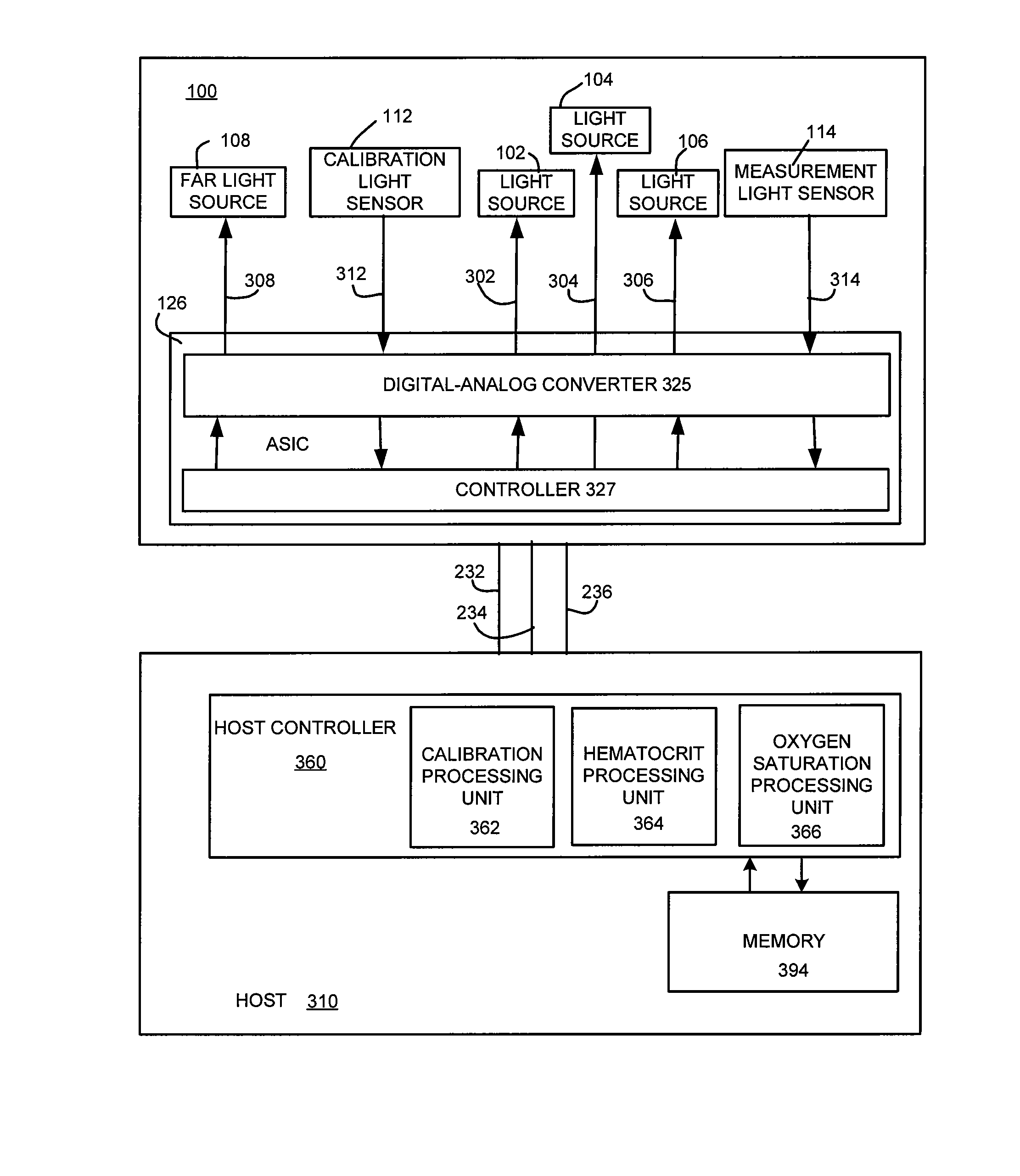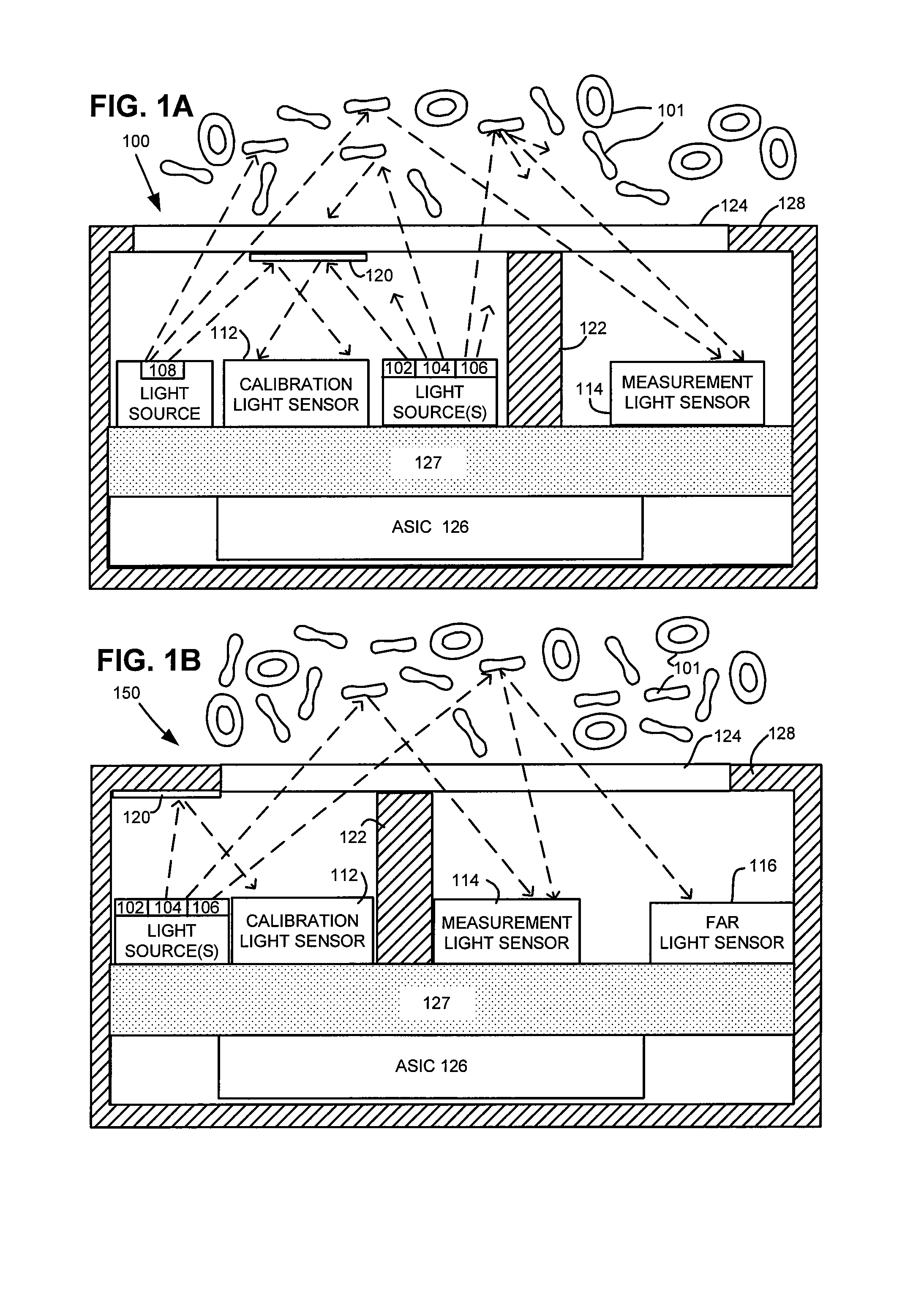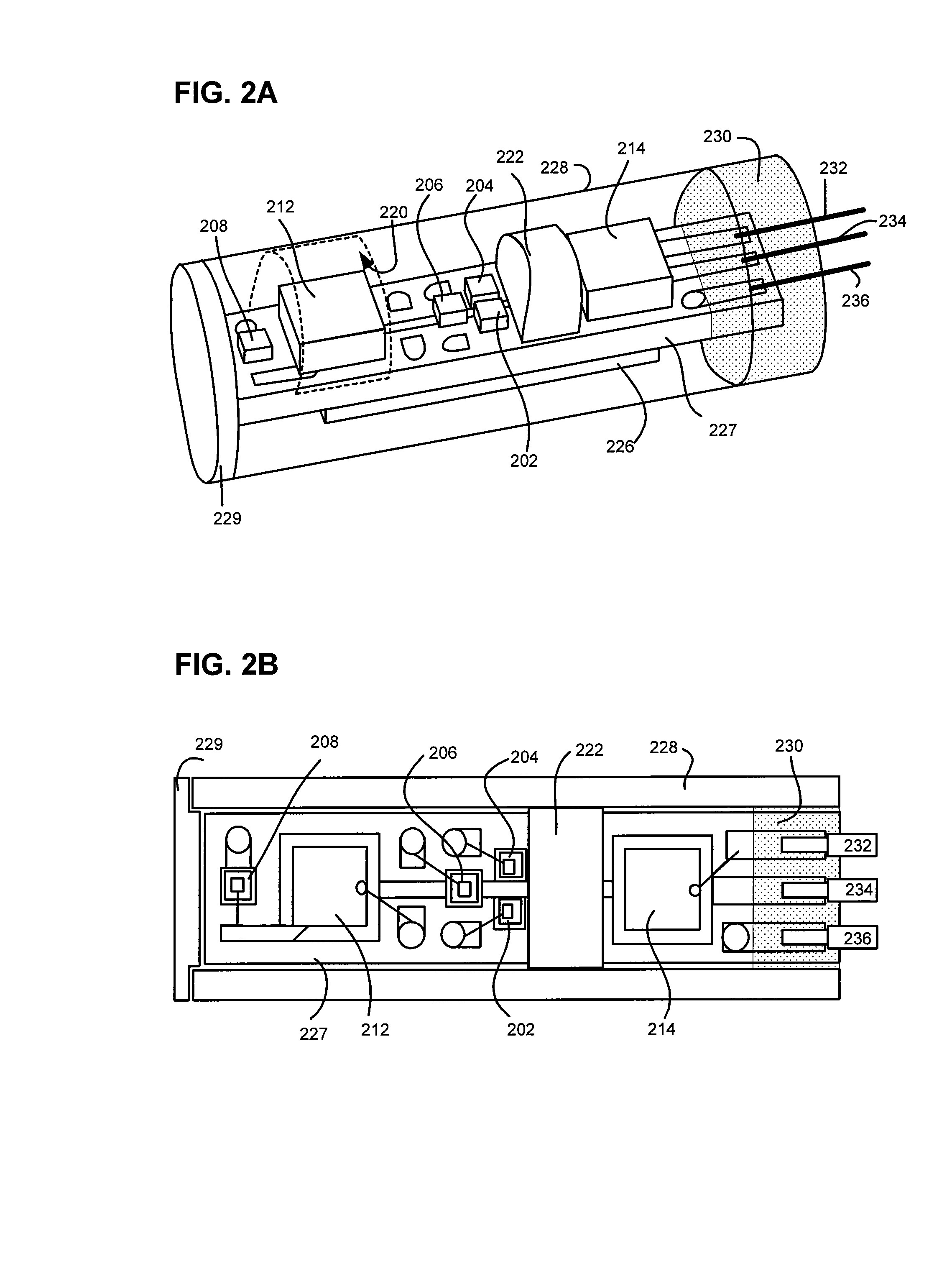Implantable multi-wavelength venous oxygen saturation and hematocrit sensor and method
a multi-wavelength, hematocrit technology, applied in the field of implantable self-calibration optical sensors, can solve the problems of high noise in single-wavelength oxymetry systems, can only be used to measure relative changes in oxygen saturation, and the relationship between scattering and oxygen saturation is different for each different wavelength, so as to improve the accuracy of oxygen saturation calculation
- Summary
- Abstract
- Description
- Claims
- Application Information
AI Technical Summary
Benefits of technology
Problems solved by technology
Method used
Image
Examples
Embodiment Construction
[0024]The following description is of the best modes presently contemplated for practicing various embodiments of the present invention. This description is not to be taken in a limiting sense but is made merely for the purpose of describing the general principles of the invention. The scope of the invention should be ascertained with reference to the claims. In the description of the invention that follows, like numerals or reference designators will be used to refer to like parts or elements throughout. Also, the left-most digit of a reference number identifies the drawing in which the reference number first appears.
Oxymetry Sensors
[0025]Referring now to FIG. 1A, there is shown an exemplary oxymetry sensor 100 suitable for use in an embodiment of the present invention. Oxymetry sensor 100 uses light sources of three different-centered wavelengths to obtain measures of blood-oxygen saturation. Oxymetry sensor 100 emits light into the blood. The absorption and / or scattering of the l...
PUM
 Login to View More
Login to View More Abstract
Description
Claims
Application Information
 Login to View More
Login to View More - R&D
- Intellectual Property
- Life Sciences
- Materials
- Tech Scout
- Unparalleled Data Quality
- Higher Quality Content
- 60% Fewer Hallucinations
Browse by: Latest US Patents, China's latest patents, Technical Efficacy Thesaurus, Application Domain, Technology Topic, Popular Technical Reports.
© 2025 PatSnap. All rights reserved.Legal|Privacy policy|Modern Slavery Act Transparency Statement|Sitemap|About US| Contact US: help@patsnap.com



